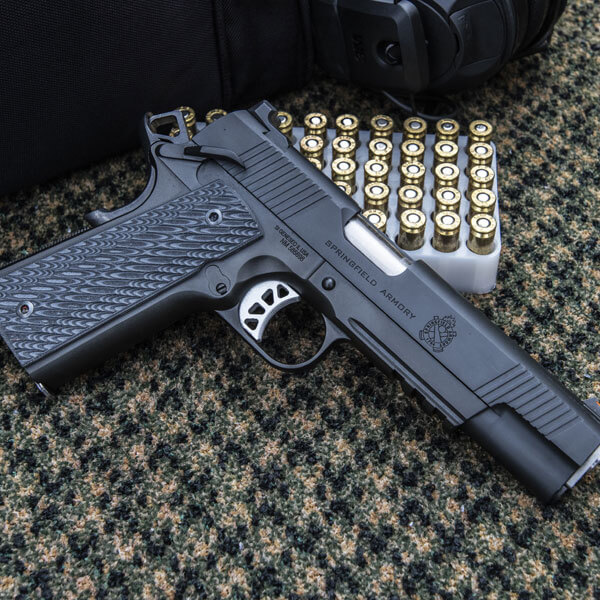Lewis and Clark’s Air Gun
November 9th, 2021
7 minute read
The Lewis and Clark Expedition of 1803 was one of the most iconic adventures in all of American history. While dozens of people made the trip possible, the core members were part of the Corps of Discovery, a specialized unit of the U.S. Army created by President Thomas Jefferson. The President chose Captain Meriwether Lewis to lead the Corps, and Lewis selected William Clark as his right-hand man.
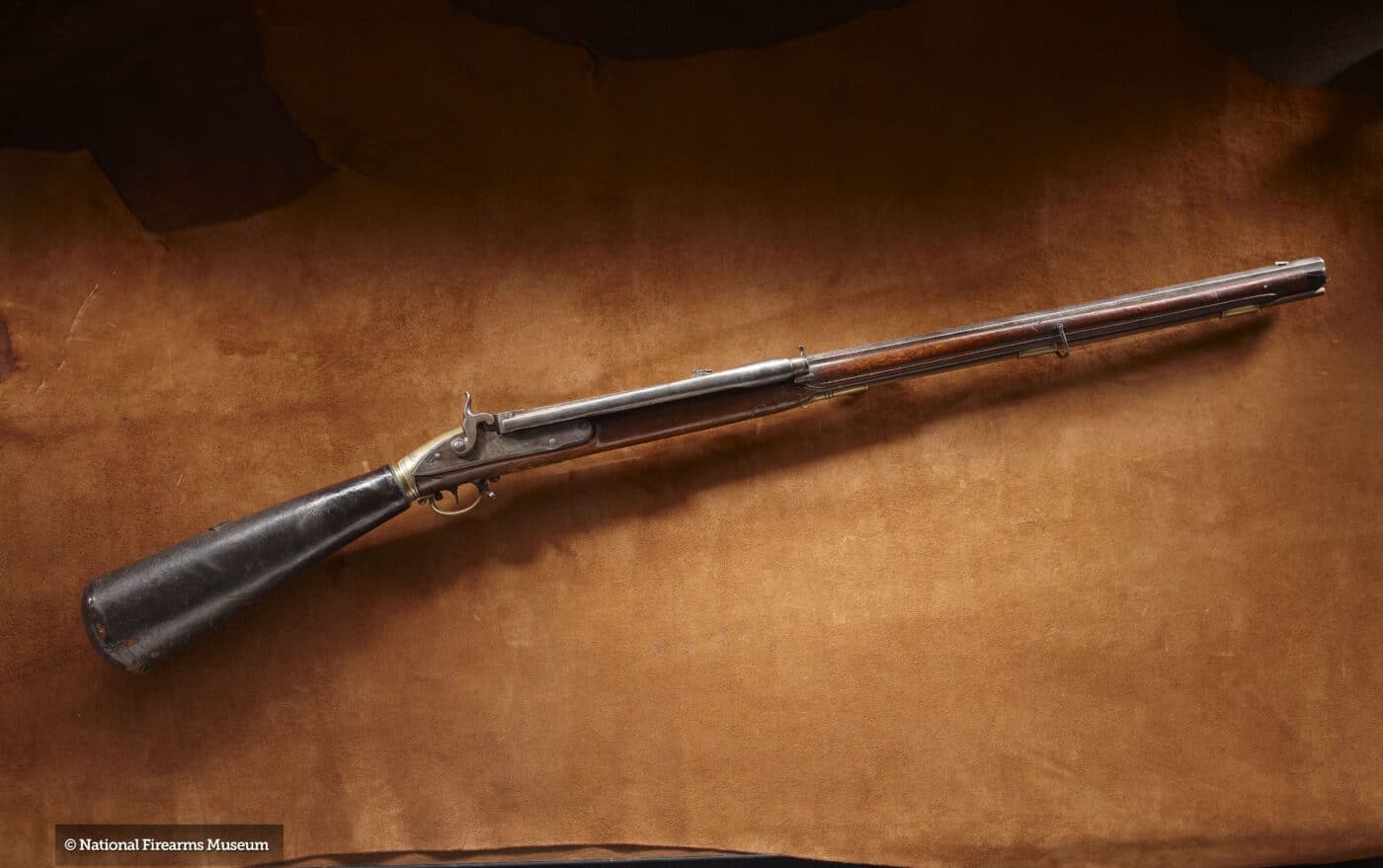
The mission presented to the Corps was enormous, to say the least. With 827,000 square miles recently acquired through the Louisiana Purchase, Corps members were tasked to explore this new wilderness and discover what people, flora, fauna and other natural resources lay within its boundaries. President Jefferson envisioned a country with firm roots from coast to coast, and the expedition headed up by Lewis and Clark was a vital fact-finding mission that would make it possible.
Cautious Steps
Because of the numerous unknown dangers — including animals and humans alike — that were sure to be encountered on the journey, some of the most important pieces of equipment that they took with them were firearms.
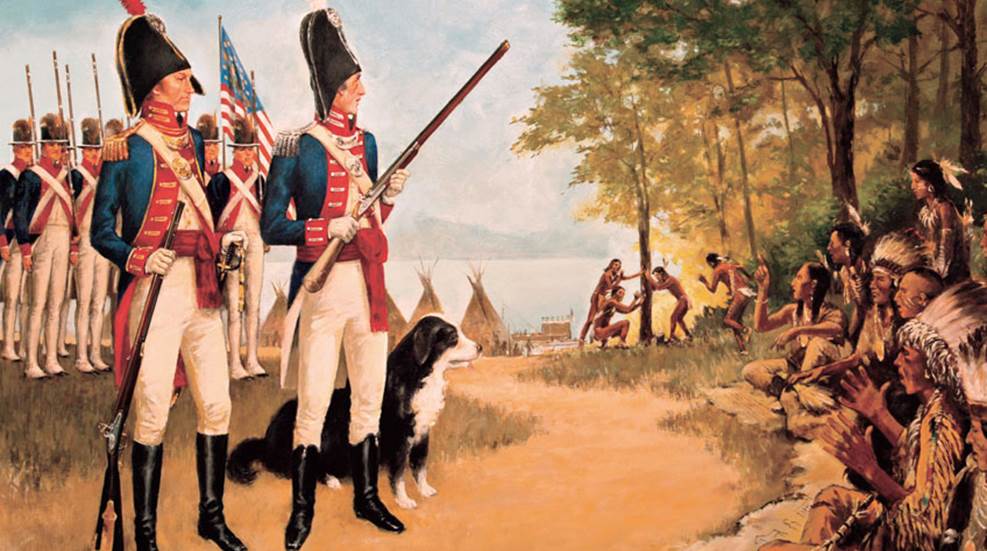
Firearms of all kinds made the trip. Officially, they brought along government muskets and contract rifles, but a wide variety of personal arms also made the journey. These included a swivel gun, pocket pistols, saddle pistols, a blunderbuss, and the most famous gun of the entire expedition: the air gun owned by Meriwether Lewis.
The diary kept by Lewis during the entire expedition is a remarkable wealth of information, including the air gun he owned. In fact, it is mentioned a total of 39 times, the first of which is in the very first entry:
August 30, 1803. “Left Pittsburgh this day at 11’o clock … went on shore and being invited on by some of the gentlemen present to try my airgun which I had purchased brought it on shore charged it and fired myself seven times fifty five yards with pretty good success; …”
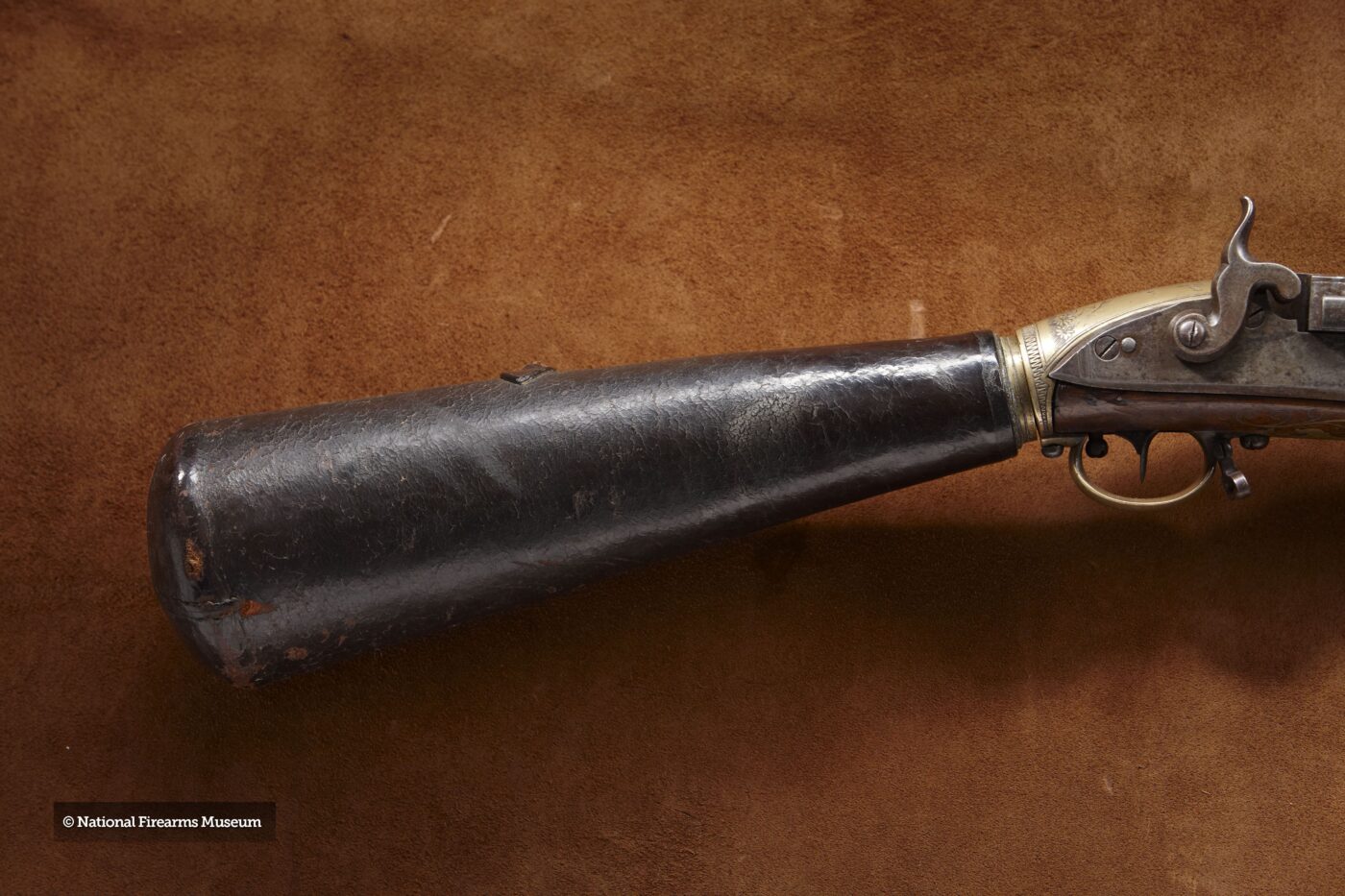
Unfortunately, despite the dozens of times the air gun is mentioned in Lewis’ diary, it is often lacking specific details. This made it difficult to pin down the exact design of the gun, as a variety of air guns were available at that time. Thankfully, Lewis wasn’t the only one keeping a diary. An entry by Thomas Rodney in his own diary lends critical details to the rifle’s specifics:
Sept. 8, 1803. “… He showed us his air gun which fired 22 times at one charge. He showed us the mode of charging her and then loaded with 12 balls which he intended to fire one at a time; … but when in perfect order she fires 22 times in a minute. All the balls are put at once into a short side barrel and are then dropped into the chamber of the gun one at a time by moving a spring; and when the trigger is pulled just so much air escapes out of the air bag which forms the breech of the gun as serves for one ball. It is a curious piece of workmanship not easily described and therefore I omit attempting it.”
Thankfully, what he did describe was just enough to narrow down the type of gun to the one that was invented by C.G. Girandoni and adopted by the Austrian military in the late 1700’s. Its mechanism is unique among air guns, as its buttstock also served as an air reservoir. This air tank held 800 p.s.i. of air pressure charged with a rod-piston pump that required almost 1,500 strokes to reach full pressure capacity.
A small tube magazine mounted on the right side of the rifled barrel held 22 .46-caliber lead balls. Gravity fed each ball into a sliding breech block that was held taut by a straight leaf spring. Performing a flicking motion with the thumb and forefinger against the breech and cocking the hammer with the off hand, the shooter could load and fire all 22 shots in under a minute — just as was described by Thomas Rodney.
Demonstrations of the air gun to the Native Americans were a key part of the Corps’ ability to impress upon them the superiority of the group and what was capable by them and others.
Another journal entry from August 17, 1805, notes: “… I also shot my air-gun which was so perfectly incomprehensible that they immediately denominated it the great medicine.”
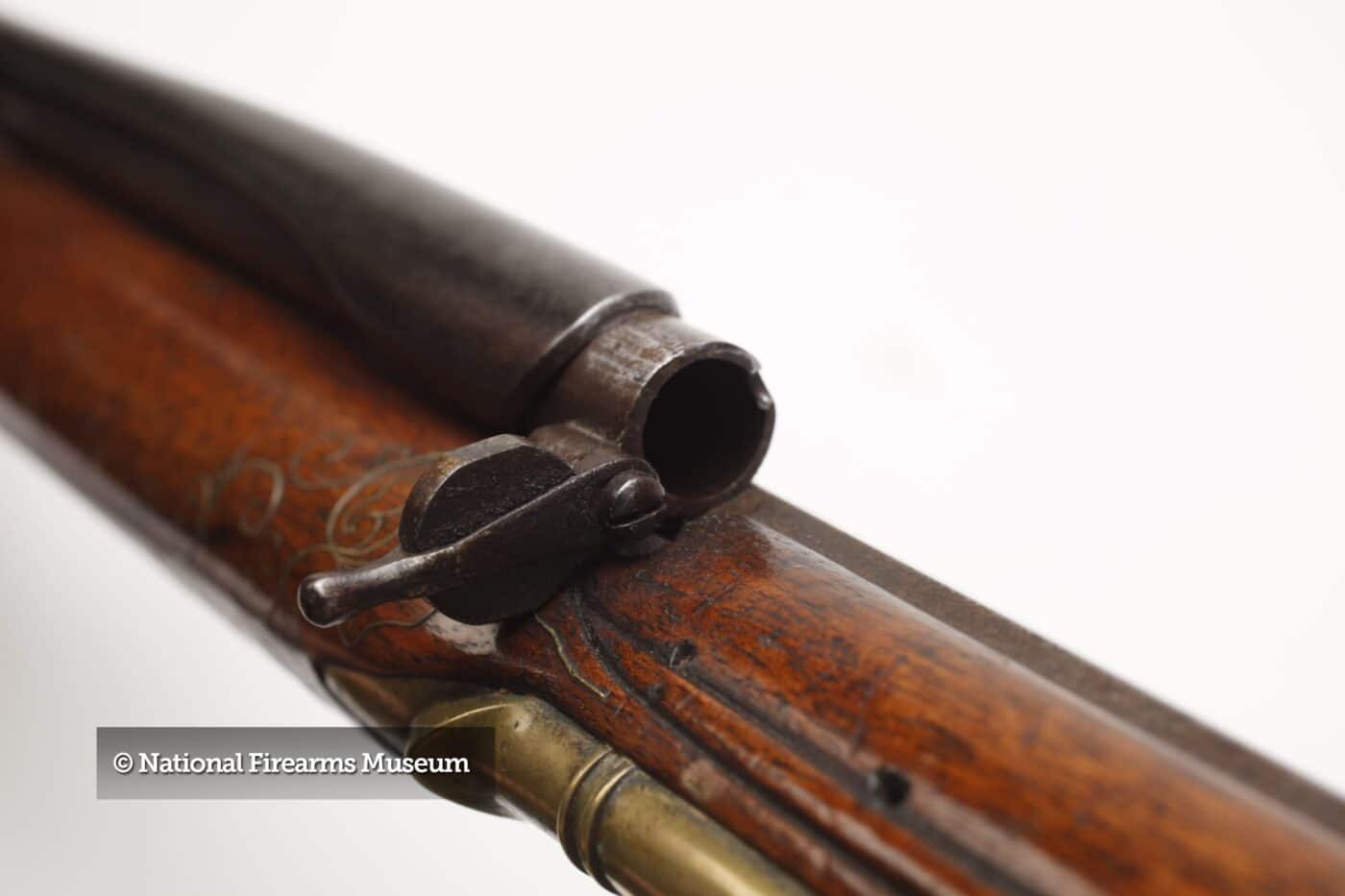
There was an air of mystery that surrounded the entire Corps when it came to the Native Americans’ impressions of them. The exact amount of firepower the men had was unknown; did each one of the dozens of men present have a rifle capable of 22 shots at once? Or was it just the one gun? They never knew for sure, and it was best not to find out in case reality was the former.
Impressive Journey
In just two-and-a-half years, the Corps of Discovery covered some 8,000 miles, lost only one man in the process, and provided immeasurable amounts of vital information all for just $40,000 — or just over $928,000 in 2021 dollars.
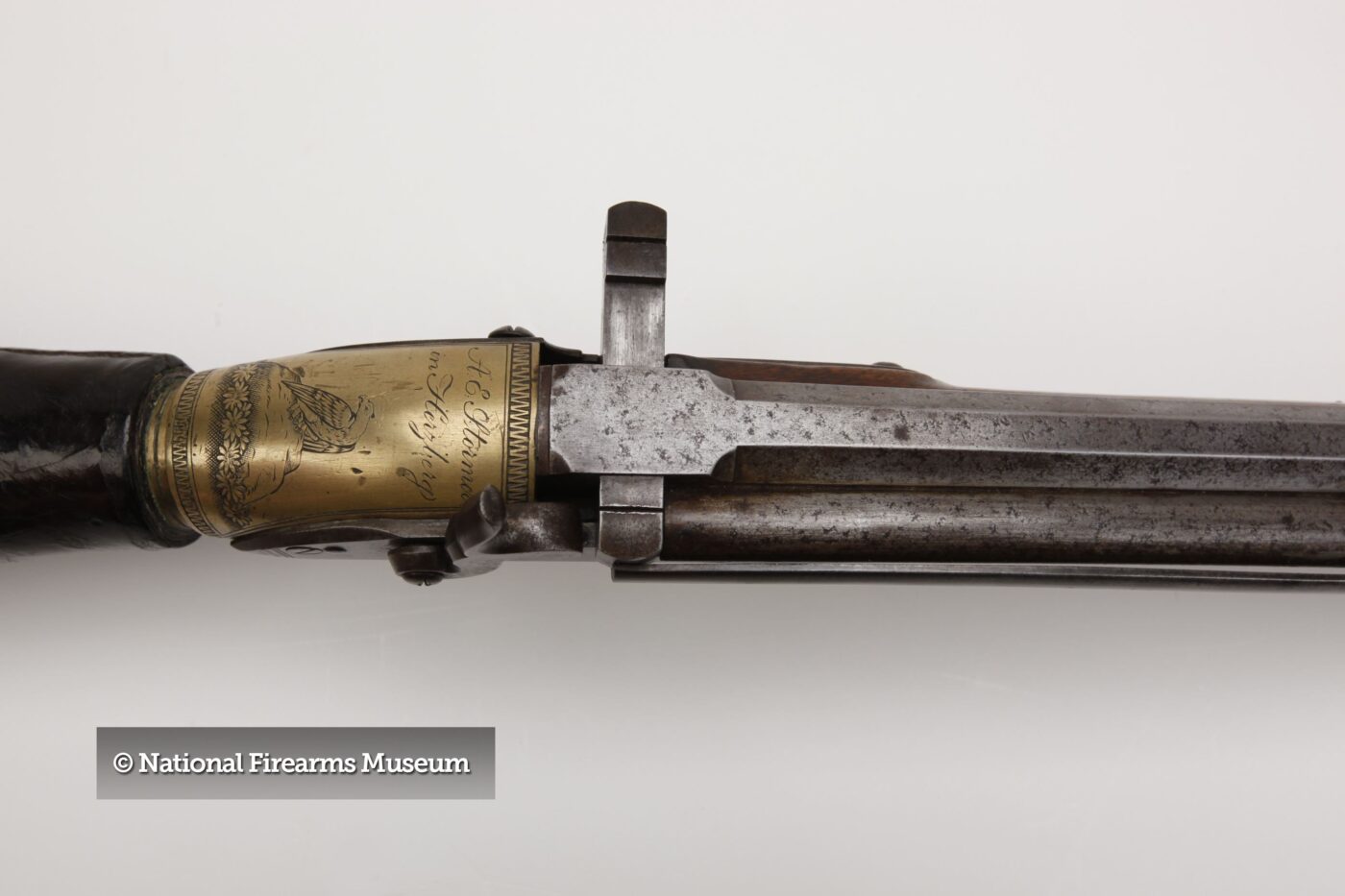
People have long wondered what happened to the original air gun owned and carried by Meriwether Lewis. Had it succumbed to hard use and been discarded? Or did it survive, waiting for someone to do the research and identify it as the gun among the many surviving examples of Girandoni air guns?
This has been debated by historians and gun collectors dating back to 1956. One of Lewis’ journal entries provides information that lends support to the present-day whereabouts of what is believed to be the actual rifle owned by Lewis:
Monday, June 10, 1805. “… Shields renewed the main Spring of my air gun we have been much indebted to the ingenuity of this man on many occasions; without having served any regular apprenticeship to any trade, he makes his own tools principally and works extremely well in either wood or metal, and in this way has been extremely serviceable to us, as well as being a good hunter and an excellent waterman.”
Hands-On
Dr. Robert Beeman of Beeman Precision Airguns had a personal collection of air guns, one of which happened to be a Girandoni rifle. A couple of men who were interested in getting detailed measurements and specifications for potential use in creating replicas received permission not only to examine Beeman’s example but also to completely disassemble it.
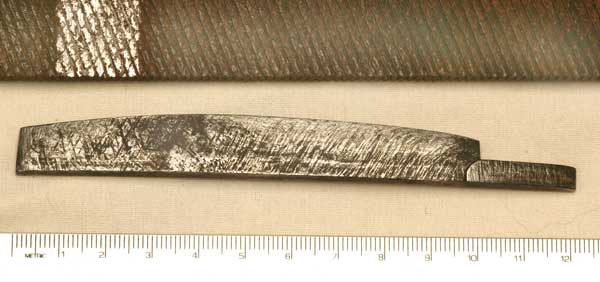
What they found was that the mainspring was unlike any other that they had previously encountered on a Girandoni. It was a flat mainspring and not the typical “V” spring as one would expect to find. More attention was given to the study of this part, and it was determined that the spring was not original to the gun. It was actually a crudely shaped spring that bore faint remaining traces of cross-hatch marks like the ones you would find on a farrier’s file.
This is where it ties back into Lewis’ entry about John Shields working on the air gun’s mainspring. Shields was a blacksmith and a farrier, so he certainly would have had access to a file in order to modify it into a new flat mainspring.
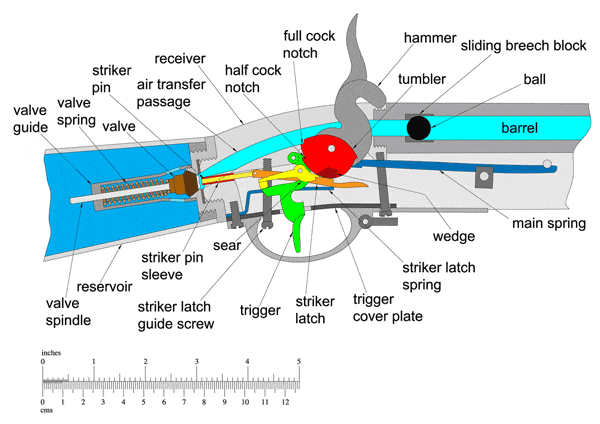
We will never know with 100% certainty if the air gun from Beeman’s collection is the one that was carried by Meriwether Lewis, but it’s certainly the one rifle with the most compelling evidence.
Conclusion
In 2006, the gun was donated to the Army Heritage Center Foundation, where it is now part of the U.S. Army Heritage and Education Center’s museum collection in Carlysle, Pennsylvania. Some people might have expected it to go to a place like the Smithsonian Institution, but this location actually makes most sense given that the Corps of Discovery was part of the Army.
In a way, it’s like the gun came full circle after 200 years. It started out on an Army expedition rooted in the pursuit of knowledge and now resides in an Army museum collection that is also dedicated to the pursuit of knowledge.
Editor’s Note: Please be sure to check out The Armory Life Forum, where you can comment about our daily articles, as well as just talk guns and gear. Click the “Go To Forum Thread” link below to jump in and discuss this article and much more!
Join the Discussion
Continue Reading
Did you enjoy this article?

 188
188





